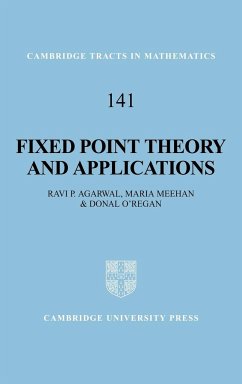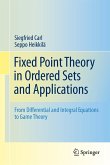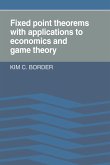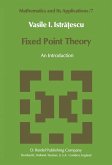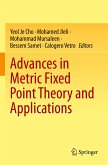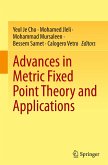This book provides a clear exposition of the flourishing field of fixed point theory, an important tool in the fields of differential equations and functional equations, among others. Starting from the basics of Banach's contraction theorem, most of the main results and techniques are developed: fixed point results are established for several classes of maps and the three main approaches to establishing continuation principles are presented. The theory is applied to many areas of current interest in analysis, with topological considerations playing a crucial role, including a final chapter on the relationship with degree theory. Researchers and graduate students in applicable analysis will find this to be a useful survey of the fundamental principles of the subject. The very extensive bibliography and close to 100 exercises mean that it can be used both as a text and as a comprehensive reference work, currently the only one of its type.
Table of contents:
Preface; 1. Contraction; 2. Nonexpansive maps; 3. Continuation methods for contractive nonexpansive maps; 4. The theorems of Brouwer, Schauder and Mönch; 5. Nonlinear alternatives of Leray-Schauder type; 6. Continuation principles for condensing maps; 7. Fixed point theorems in conical shells; 8. Fixed point theory in Hausdorff locally convex linear topological spaces; 9. Contractive and nonexpansive multivalued mappings; 10. Multivalued maps with continuous selection; 11. Multivalued maps with closed graph; 12. Degree theory; 13. References; Index.
A clear exposition of the flourishing field of fixed point theory. Most of the main results and techniques are developed, together with applications in analysis. Researchers and graduate students in applicable analysis will find this to be a useful survey of the fundamental principles of the subject.
Survey of fixed point theory for researchers and graduate students.
Hinweis: Dieser Artikel kann nur an eine deutsche Lieferadresse ausgeliefert werden.
Table of contents:
Preface; 1. Contraction; 2. Nonexpansive maps; 3. Continuation methods for contractive nonexpansive maps; 4. The theorems of Brouwer, Schauder and Mönch; 5. Nonlinear alternatives of Leray-Schauder type; 6. Continuation principles for condensing maps; 7. Fixed point theorems in conical shells; 8. Fixed point theory in Hausdorff locally convex linear topological spaces; 9. Contractive and nonexpansive multivalued mappings; 10. Multivalued maps with continuous selection; 11. Multivalued maps with closed graph; 12. Degree theory; 13. References; Index.
A clear exposition of the flourishing field of fixed point theory. Most of the main results and techniques are developed, together with applications in analysis. Researchers and graduate students in applicable analysis will find this to be a useful survey of the fundamental principles of the subject.
Survey of fixed point theory for researchers and graduate students.
Hinweis: Dieser Artikel kann nur an eine deutsche Lieferadresse ausgeliefert werden.

